Setting up the perfect band lighting setup can make all the difference between a memorable performance and one that falls flat. Whether you’re performing at a small venue, a large outdoor space, or a bustling concert hall, having the right lighting configuration is crucial for showcasing your talent and creating the ideal atmosphere. From budget-friendly solutions to high-end LED setups, this guide will walk you through everything you need to know to illuminate your stage effectively. Explore tips for small band lighting setups, discover how to set up lights for concerts, and learn about advanced techniques for creating standout stage effects. With the right approach, your band’s lighting can elevate your performance and leave your audience in awe.
Key Takeaways
– Perfect your LED stage light setup with our comprehensive guide.
– Stay safe and efficient with proper power and mounting strategies.
– Captivate your audience with strategically placed front lights.
– Elevate your performance with expertly integrated special effects.
– Simplify your setup with top-notch lighting control solutions.
– Understand the teamwork behind concert lighting management.
– Ensure professional lighting placement with a three-light system.
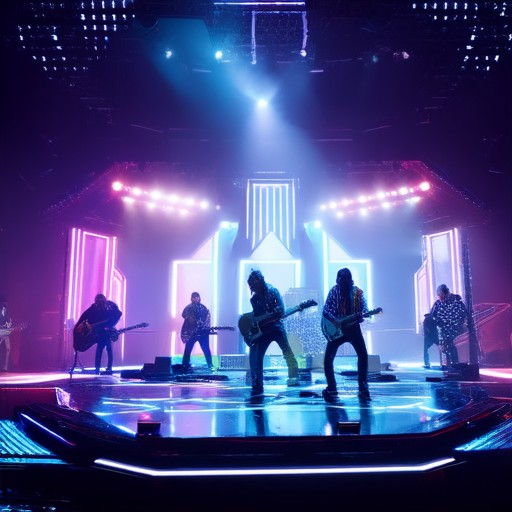
The Three Lighting Rule Explained
The three-point lighting setup is a fundamental technique used in video production and photography to create balanced and visually appealing lighting. This method ensures that subjects are well-lit from multiple angles, resulting in a three-dimensional effect.
Here’s a breakdown of the three lighting sources:
- Key Light: The primary light source placed at a 45-degree angle to the camera, casting shadows that define the subject’s features and creating depth.
- Fill Light: A softer light positioned opposite the key light to reduce shadows and add texture, ensuring the subject appears well-rounded.
- Backlight: A dimmer light placed behind the subject to highlight textures and create separation between the subject and the background.
By strategically placing these lights, videographers and photographers can achieve professional-looking results even in challenging lighting conditions. The key is to ensure each light source complements the others while avoiding harsh shadows or uneven illumination.
For more tips on mastering lighting setups, explore our comprehensive guide on video production techniques.
Best Band Lighting on a Budget
For bands seeking cost-effective lighting solutions, LED technology stands out as a top choice. LED lights are not only affordable but also energy-efficient and generate less heat, making them ideal for various stages. Here’s a breakdown of effective lighting options:
- LED Par Cans : These are versatile and widely used for stage lighting. They offer vibrant colors, multiple settings, and long lifespans, making them perfect for both indoor and outdoor performances.
- LED Strips : Ideal for creating dynamic effects, LED strips can be wrapped around instruments, stages, or even clothing. They are lightweight and easy to set up, offering a wide range of color options.
- LED Bars and Towers : Larger setups like LED bars or towers can create dramatic stage effects. These are often used for backlighting or as centerpieces, adding depth to the performance.
- Battery-Powered Lights : For mobile performances or small venues, battery-powered lights are a great alternative. They eliminate the need for bulky power supplies and can be easily transported.
- Color Customization : Many LED lights allow for custom color settings, enabling bands to match their branding or create visually striking effects during performances.
- DIY Lighting Ideas : Repurposing everyday items like string lights or lanterns can save costs while adding unique ambiance. Just ensure they are safe for stage use.
When shopping, consider reputable brands like Brand Name for quality and reliability. Always check for positive customer reviews and ensure the lighting meets safety standards.
By investing in LED lighting and exploring creative setups, bands can enhance their stage presence without breaking the bank.
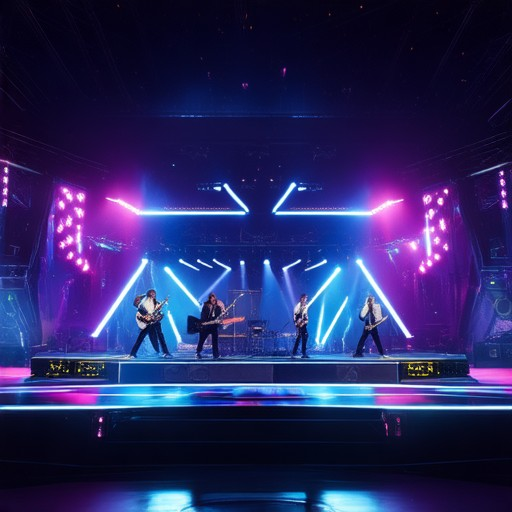
Best Lighting Setup for a Group Photo
To capture the perfect group photo, the lighting setup is crucial for ensuring everyone looks their best and the photo turns out sharp and well-balanced. Here’s a step-by-step guide to achieving the ideal lighting:
- Position the Main Light: Place the primary light source slightly above and to the side of the group. This ensures the light illuminates faces evenly and avoids casting deep shadows.
- Add a Fill Light: Use a reflector or a secondary light source to softly fill in any shadows created by the main light. This helps maintain a balanced look across all faces.
- Consider Background Lighting: Introduce a third light source positioned behind the group to illuminate the background and prevent it from appearing too dark or reflective. Diffuse this light to avoid harshness.
- Use a Diffusion Panel or Reflector: Attach a diffusion panel or use a reflector with the main light to soften the light and reduce glare, especially during midday sun or harsh artificial lighting.
- Adjust Lights for Group Size: For smaller groups, a single light with a diffusion panel works well. For larger groups, opt for two lights—one main and one fill—to cover the entire area without excessive shadows.
- Flash Considerations: If using a flash, position it away from the main subject to avoid overexposing faces. Natural light is often preferred, but knowing how to manage a flash effectively can be a lifesaver in low-light conditions.
- Utilize Built-In Camera Features: Many cameras come equipped with LED lights that can be diffused for soft, even illumination. This is particularly useful in dimly lit environments.
By carefully positioning your lights and using tools like reflectors or diffusion panels, you can achieve a professional-looking group photo every time. Remember to experiment with different setups and times of day to find what works best for your group and setting.
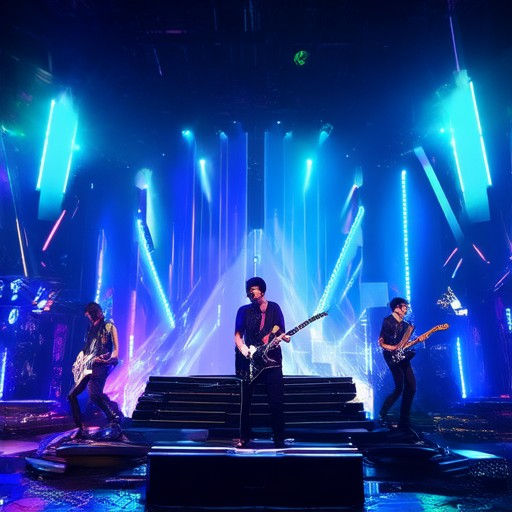
How to Set Up Lights for a Concert
To set up lights for a concert, follow these organized steps:
- Determine Light Types : Choose appropriate lights based on the venue size and concert style. Consider stage lights, spotlights, LED lights, and special effects like lasers or fog machines.
- Assess Power Requirements : Calculate the total power needed for each light fixture. Use generators or ensure ample extension cords to avoid power shortages.
- Mount Lights Safely : Secure lights on sturdy structures or scaffolds to prevent falls. Ensure stability and safety, especially for heavy fixtures.
- Position Front Lights Strategically : Aim stage lights towards performers, avoiding the audience. Adjust angles and heights for optimal visibility and mood matching.
- Set Up Special Effects : Install lasers carefully to prevent hazards and position fog machines safely, considering water and power needs.
- Implement Lighting Control : Use lighting consoles for dimming, preset programs, and adjustments. Hire experienced personnel to program and operate these systems.
- Prioritize Safety : Use fire-resistant materials and ensure secure electrical connections to minimize fire risks and accidents.
- Plan Timely Execution : Start setup early to allow sufficient time for testing and adjustments before the event begins.
By methodically addressing each component, you can effectively set up a concert lighting system that enhances the performance while ensuring safety and technical reliability.
Who Controls the Lights at Concerts?
The control of lights at concerts is managed by a collaborative effort involving several entities:
- Venue Staff : The venue’s technical crew handles the initial setup and maintenance of the lighting systems, ensuring everything functions properly before the event begins.
- Tour Production Company : For major concerts, the tour company typically takes charge of the production aspects, including lighting design and execution, tailored to the artist’s specifications.
- Lighting Designer : This specialized role creates the light show, sets up fixtures, and programs effects, working closely with venue staff to ensure everything is in place.
- Technical Director : Overseeing the coordination between the lighting designer, sound team, and venue staff, ensuring the show runs seamlessly.
Together, these teams ensure the lights enhance the concert experience effectively.
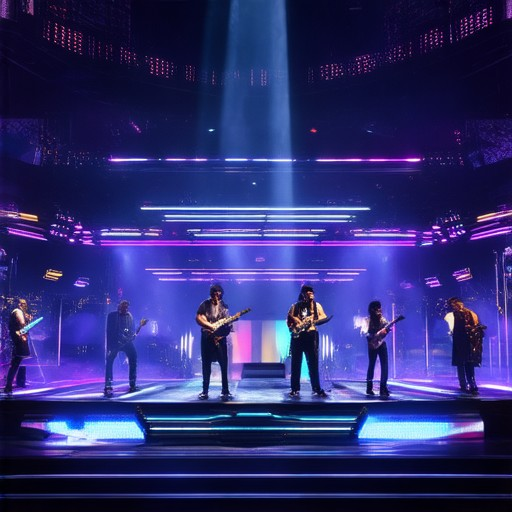
How to Position Each Light in a Setup
To effectively set up three-point lighting, follow these steps:
- Key Light: Place the first light source at approximately 45 degrees to one side of the subject. This creates a dramatic, modeling effect by casting shadows that highlight the subject.
- Fill Light: Position the second light source directly opposite the key light (around 180 degrees) to fill in any shadows created by the key light, ensuring a balanced appearance.
- Back Light: Place the third light source behind the subject, typically at 135 degrees relative to the key light. This separates the subject from the background and adds depth to the scene.
This setup ensures that the subject is well-defined, the background is visible, and the lighting appears natural and professional.


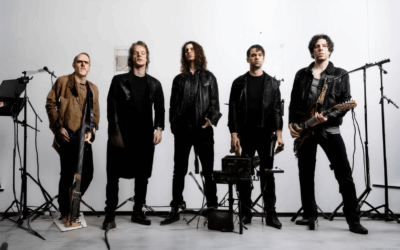
0 Comments